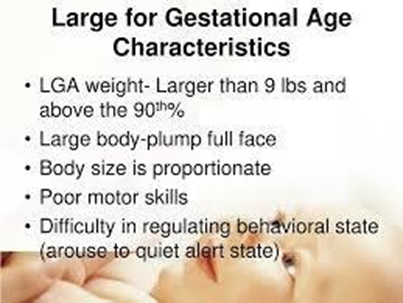A small-for-gestational age infant is admitted to the observational care unit with the nursing diagnosis of ineffective thermoregulation related to lack of fat stores as evidenced by persistent low temperatures. Which are appropriate nursing interventions? Select all that apply.
Minimize kangaroo care.
Assess the axillary temperature every hour.
Encourage skin-to-skin contact.
Assess environment for sources of heat loss.
Review maternal history.
Bathe the neonate with warmer water.
Correct Answer : A,B,C,D,E
A. In small-for-gestational age infants, kangaroo care may increase heat loss due to evaporation, conduction, or convection from the parent's skin or clothing. The nurse should minimize kangaroo care and use other methods of warming such as radiant warmers, incubators, or swaddling.
B. Assessing the axillary temperature regularly helps monitor the infant's temperature and response to interventions.
C. Encouraging skin-to-skin contact helps promote thermal regulation and bonding between the infant and parents. Unlike kangaroo care, skin-to-skin contact does not involve covering the infant with clothing or blankets, which can reduce heat loss by radiation or convection. The nurse should encourage skin-to-skin contact when possible and monitor the infant's temperature closely.
D. Assessing the environment for sources of heat loss is important for minimizing heat loss and promoting thermal regulation.
E. Reviewing maternal history can provide insights into potential risk factors or contributing factors to the infant's condition, such as maternal age, parity, weight, height, nutrition, smoking, alcohol, drug use, chronic diseases, infections, placental abnormalities, fetal anomalies, or complications during pregnancy or delivery.
F. Bathing the neonate with warmer water may increase the risk of overheating and should be avoided in infants at risk of thermal instability.
Nursing Test Bank
Naxlex Comprehensive Predictor Exams
Related Questions
Correct Answer is C
Explanation
A. A birthweight above the 90th percentile for gestational age is characteristic of large-for-gestational-age newborns. The above birth weight is within the normal ranges.
B. Strong, brisk motor skills are not necessarily indicative of being large-for- gestational-age.
C. Large-for-gestational-age newborns. They may have difficulty in arousing to a quiet alert state due to hypoglycemia, hypocalcemia, or polycythemia.
D. A wasted appearance of extremities is more indicative of intrauterine growth restriction (IUGR) rather than being large-for-gestational-age. LGA newborns typically have plump and rosy appearance.

Correct Answer is D
Explanation
A. A height of 47 inches would indicate excessive growth.
B. A height of 41 inches would indicate insufficient growth.
C. A height of 45 inches would be slightly above the normal range.
D. The normal range of growth for a preschooler varies, but typically, a child will grow approximately 2-3 inches per year. Given that the girl was 40 inches tall at age 4, a height of 43 inches at age 5 would be within the expected range of growth.
Whether you are a student looking to ace your exams or a practicing nurse seeking to enhance your expertise , our nursing education contents will empower you with the confidence and competence to make a difference in the lives of patients and become a respected leader in the healthcare field.
Visit Naxlex, invest in your future and unlock endless possibilities with our unparalleled nursing education contents today
Report Wrong Answer on the Current Question
Do you disagree with the answer? If yes, what is your expected answer? Explain.
Kindly be descriptive with the issue you are facing.
